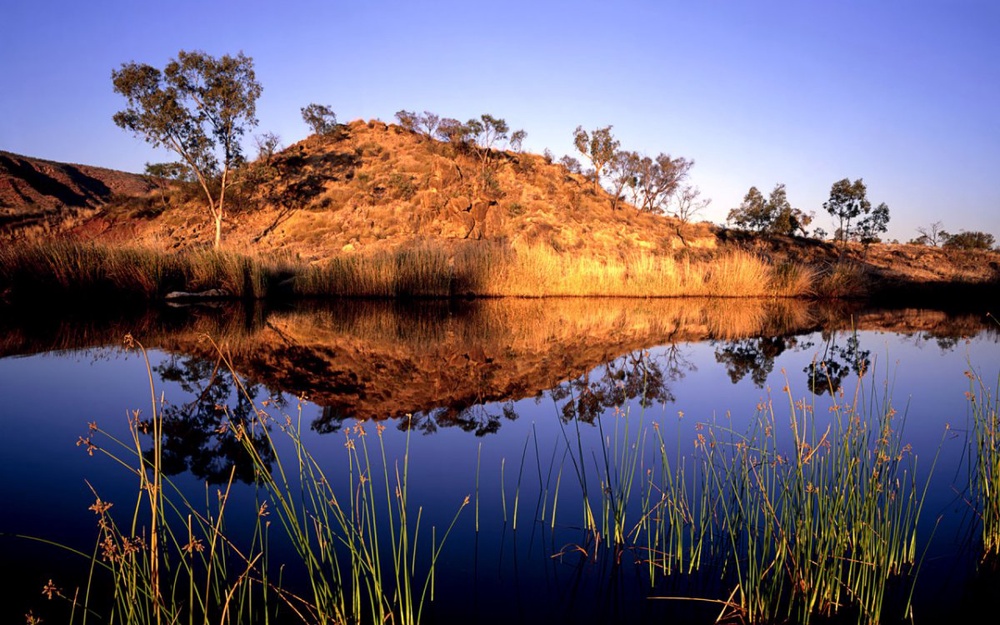
Australia approved an "historic" plan Thursday to save an ailing river system vital to the nation's food bowl by returning the equivalent of five Sydney Harbour's worth of water to the network each year, AFP reports. Environment Minister Tony Burke said he signed into law the final draft of a water reform plan for the Murray-Darling Basin, a river network sprawling for one million square kilometres (400,000 square miles) across five Australian states. The scheme will see 2,750 gigalitres of water, equivalent to five Sydney Harbours, returned annually as environmental flows to the system -- short of the 4,000 gigalitres sought by conservationists but more than wanted by farmers. Burke said the figure could reach 3,200 gigalitres with infrastructure improvements to which the government had committed Aus$1.77 billion (US$1.83 billion). Two million tonnes of salt -- enough to fill the Melbourne Cricket Ground -- would also be flushed out every year under the plan, which he described as "historic". "The foundation and reason for the reform is unequivocally and unapologetically to restore the system to health," Burke told reporters "Consistent over-allocation and mismanagement (have) seriously degraded the health of the system." The rivers and their basin stretch thousands of kilometres from Queensland state to South Australia and cross various climates, affecting the livelihood of millions of people, but it has been over-exploited for years. It has also been seriously depleted by years of drought while suffering from increased salt concentrations due in part to low rainfall. Burke said the system had been existing in a state of drought even before the last El Nino weather event triggered a crippling 10-year dry spell that devastated farming communities across southeastern Australia. "By the time the last drought hit, the basin's ecosystems had essentially been living in drought conditions and had no resilience to cope," he said. The government has been torn between irrigators and farmers in the key food-growing area who have urged against removing too much water from industry, and environmental groups who argue the basin needs a huge boost. Burke said the government had done "everything we can to minimise the impact on communities short of saying we will make a compromise on the health of the system". "There will be more magnificent waterbirds and native fish, and people will be able to visit river tourist locations to experience the stunning natural ecosystems of the basin," he said.





Australia approved an "historic" plan Thursday to save an ailing river system vital to the nation's food bowl by returning the equivalent of five Sydney Harbour's worth of water to the network each year, AFP reports.
Environment Minister Tony Burke said he signed into law the final draft of a water reform plan for the Murray-Darling Basin, a river network sprawling for one million square kilometres (400,000 square miles) across five Australian states.
The scheme will see 2,750 gigalitres of water, equivalent to five Sydney Harbours, returned annually as environmental flows to the system -- short of the 4,000 gigalitres sought by conservationists but more than wanted by farmers.
Burke said the figure could reach 3,200 gigalitres with infrastructure improvements to which the government had committed Aus$1.77 billion (US$1.83 billion).
Two million tonnes of salt -- enough to fill the Melbourne Cricket Ground -- would also be flushed out every year under the plan, which he described as "historic".
"The foundation and reason for the reform is unequivocally and unapologetically to restore the system to health," Burke told reporters
"Consistent over-allocation and mismanagement (have) seriously degraded the health of the system."
The rivers and their basin stretch thousands of kilometres from Queensland state to South Australia and cross various climates, affecting the livelihood of millions of people, but it has been over-exploited for years.
It has also been seriously depleted by years of drought while suffering from increased salt concentrations due in part to low rainfall.
Burke said the system had been existing in a state of drought even before the last El Nino weather event triggered a crippling 10-year dry spell that devastated farming communities across southeastern Australia.
"By the time the last drought hit, the basin's ecosystems had essentially been living in drought conditions and had no resilience to cope," he said.
The government has been torn between irrigators and farmers in the key food-growing area who have urged against removing too much water from industry, and environmental groups who argue the basin needs a huge boost.
Burke said the government had done "everything we can to minimise the impact on communities short of saying we will make a compromise on the health of the system".
"There will be more magnificent waterbirds and native fish, and people will be able to visit river tourist locations to experience the stunning natural ecosystems of the basin," he said.

 +7 (777) 001 44 99
+7 (777) 001 44 99















































